If a thousand-year-old manor house could possibly be described as comfortable, Haddon Hall would fit the bill.
Its history is mild; little violence, no Cromwellian slighting, just a Ducal manor passing gently down the centuries accompanied by only a bit of skirmishing around the edges on Catholic and Protestant issues.
The result is a superbly preserved example of a medieval manor house, described by Simon Jenkins in “1000 Best Houses” as “the most perfect house to survive from the middle ages”.
Though William Peverel held the manor of Haddon in 1087, when the survey that produced the Domesday Book took place, present-day Haddon Hall dates from the 12th Century to the early 17th Century.
It then lay dormant for over two hundred years from 1700 until the 1920s, when the 9th Duke and Duchess of Rutland restored the house and gardens, and it once again became a well-loved home.
Clearly, the early owners loved animals. particularly dogs. I was hugely amused to note a Tudor solution to an age-old problem known only too well to dog owners: how to keep Fido off the good furniture.
Coming up the stairs we noted these gates and wondered about their purpose. Probably to keep small children from tumbling down the stone steps, I thought. But no…
The gates were to keep the dogs out of the newly refurbished first-floor apartments. Dogs were also barred from attending religious services!
The great hall, below, contained mechanical ride-on toys, much to the entertainment of some of the other guests. But it was the panelling and the windows that caught my eye.
The diamond-shaped panels in the leaded windows undulate and shimmer in the light.
Later, when we went outside we could clearly see how the windows buckled. Isn’t it remarkable?
It’s not as apparent from inside, where your attention is captured by the light shining through the windows and onto the restful grey panelling; the whole “greige” trend of Restoration Hardware furnishings was suddenly clear.
The flowers were beautifully arranged and very striking.
Look at the detail over the door and the cornice moulding.
The curtains were of rich fabric, which I was not able to capture effectively. But the colours were picked out in the lavender thistles.
Some of the leaded panels contained coats of arms. You can see the buckling in the window panes much more clearly here.
The property has been used extensively as a film location. No fewer than three versions of “Jane Eyre” have been filmed here, as well as “Elizabeth”, “Pride & Prejudice”, “The Other Boleyn Girl” and “The Princess Bride”.
The dining room gets a lot of use. The plaster ceiling is lower than those in a lot of the house and it’s furnished with comfortable chairs. It’s known as “The Parlour” and dates from about 1500. It was panelled in 1545 and shows the Boar’s Head Crest and armorial shields of many generations of the Vernon family. You may just be able to see the royal coat of arms and the motto ‘Drede God and honor the Kyng’, over the fireplace. The table is a 20th Century copy of the ancient table in the Great Hall.
The panels in the ceiling are painted with the Tudor Rose and Talbot Dogs, the emblem of Anne Talbot, the wife of Henry Vernon.
The real delight of the visit was the gardens.
Beautifully restored, the terraces go up several levels.
Vistas stretch into the distance from each terrace.
Paths beckon and places to sit and contemplate are tucked into quiet corners.
I love hollyhocks and this deep burgundy variety had me wondering how to get hold of some of the seeds.
Along the paths, we strolled…
….admiring the glorious end of summer colours.
The typically Elizabethan knot garden was a pattern of orderliness.
We visited the chapel towards the end of our visit. Though quite small, it’s lovely. The East Window, shown below, carries the date 1427 when the extension of the Chapel by Richard Vernon VII was begun.
Dedicated to St Nicholas, it was originally the parish church for Nether Haddon (English names beginning with “Nether” always make me chuckle, conjuring up silly phrases like “nether regions” and places called “Nether Wallop”).
The chapel has 15th-century wall paintings, and an early 15th-century Nottingham alabaster reredos (the screen behind the altar). The paintings are beautifully detailed, especially the flora and fauna.
Though the ghoulish skeletons are a bit disturbing.
Also in the nave is a beautiful monument to Lord Haddon, who died in 1894, aged 9. It was designed by his mother, Violet, Duchess of Rutland.
It was a bit of a melancholy end to a wonderful visit, and we turned our steps back to The Hunting Tower on the grounds of Chatsworth, where we were staying. Such a gorgeous estate, right down to the coffee shop, below.
Haddon Hall is a member of Historic Houses, an alternative organization to the National Trust. We’ve had many lovely visits among their member-homes, including nearly Chatsworth, and further afield, Berkeley and Blenheim, Both organizations are good reference points if you’re wondering what to visit in specific regions in the UK. The blog A Bit About Britain is another wonderful resource.
I’m sharing this post with Between Naps on the Porch.



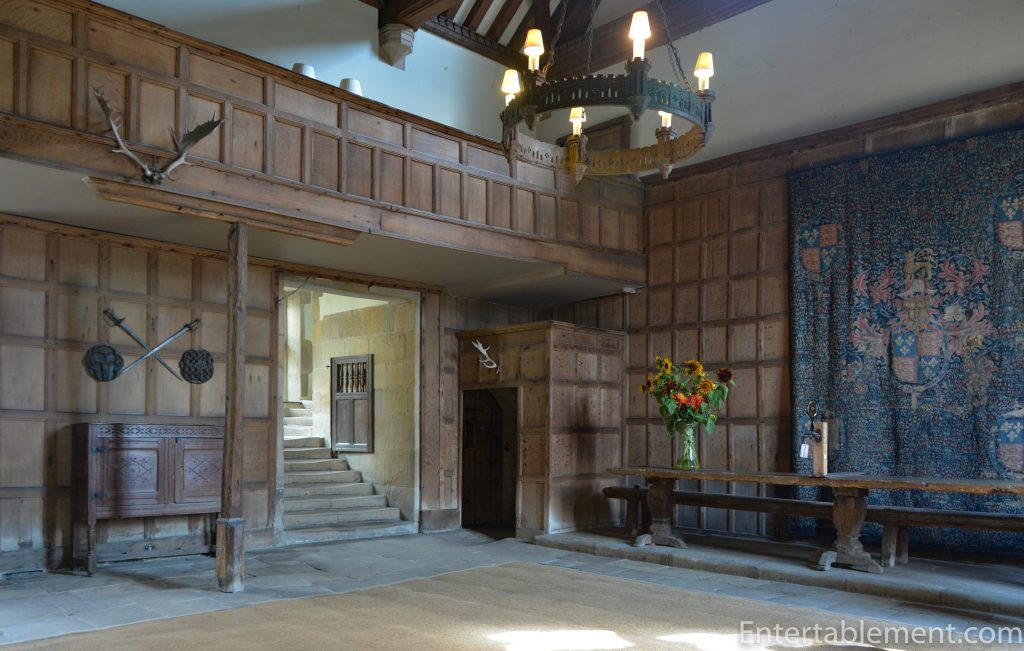
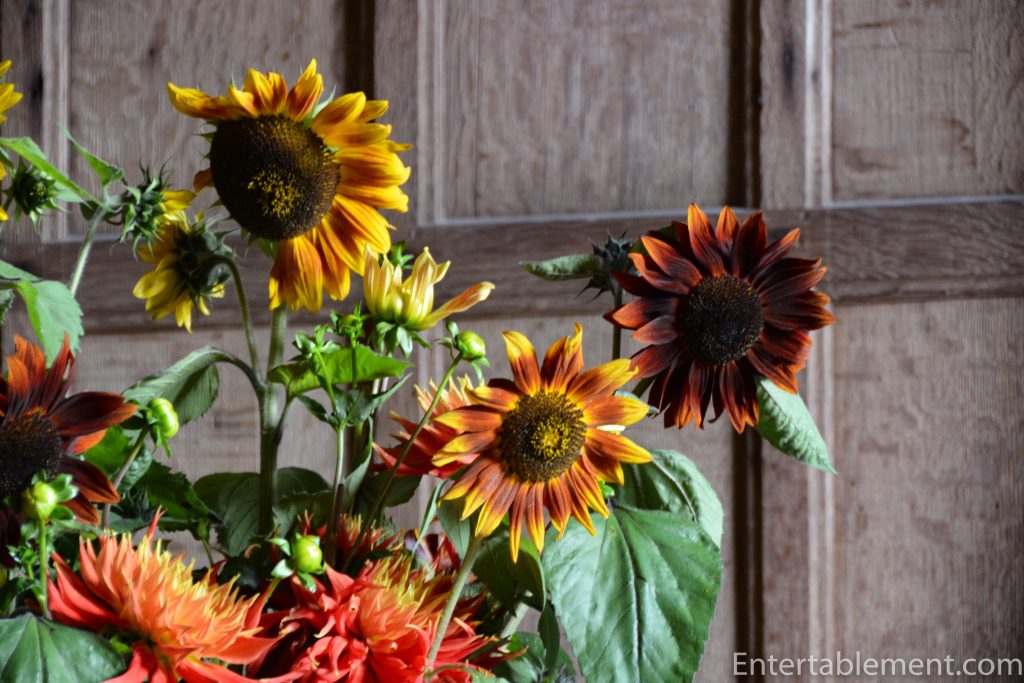
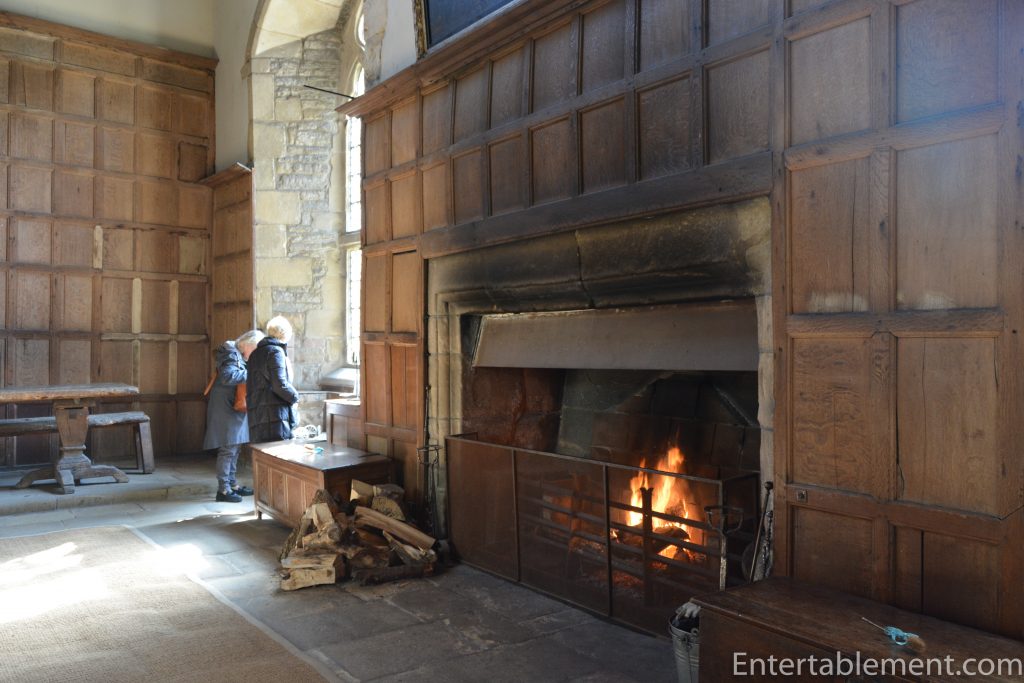
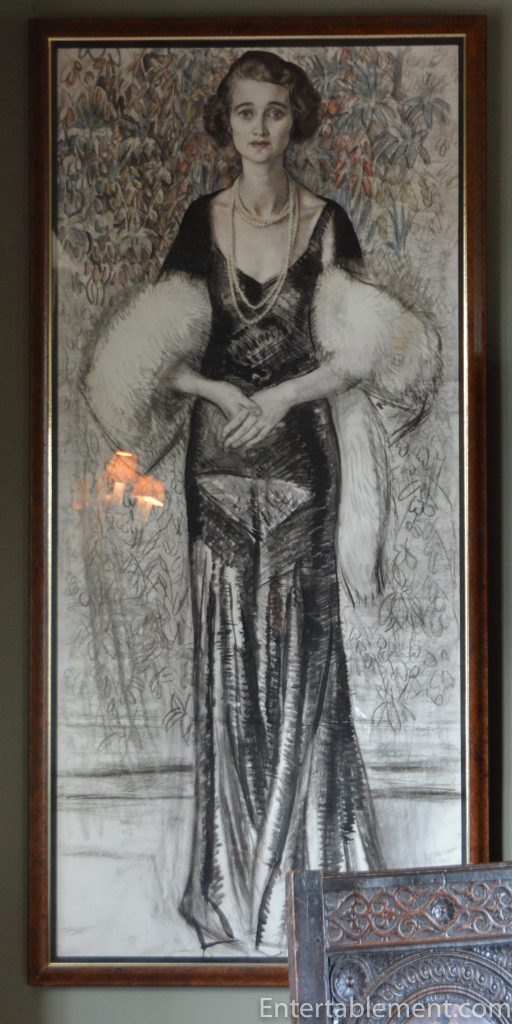
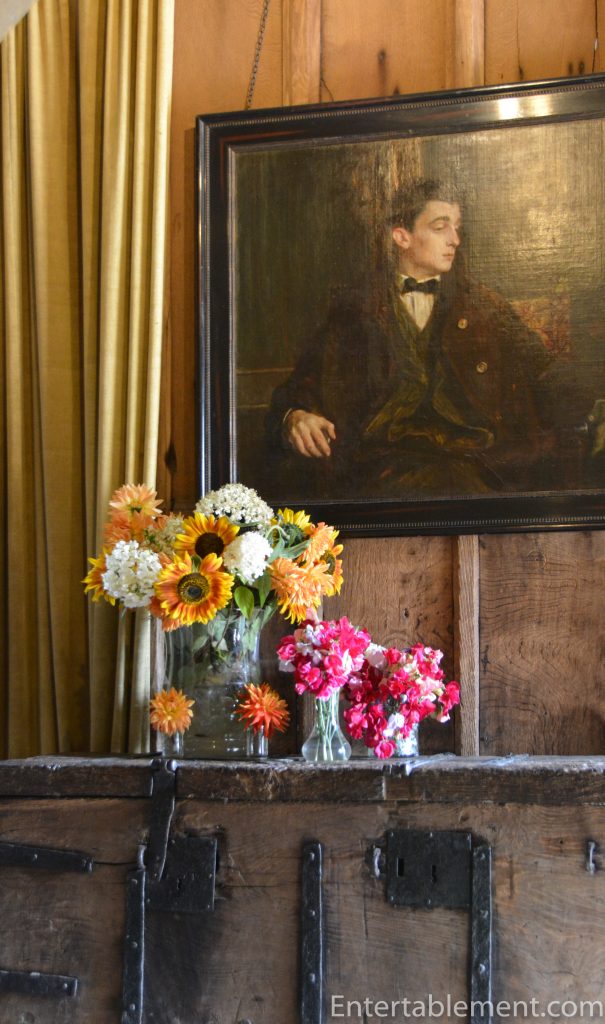

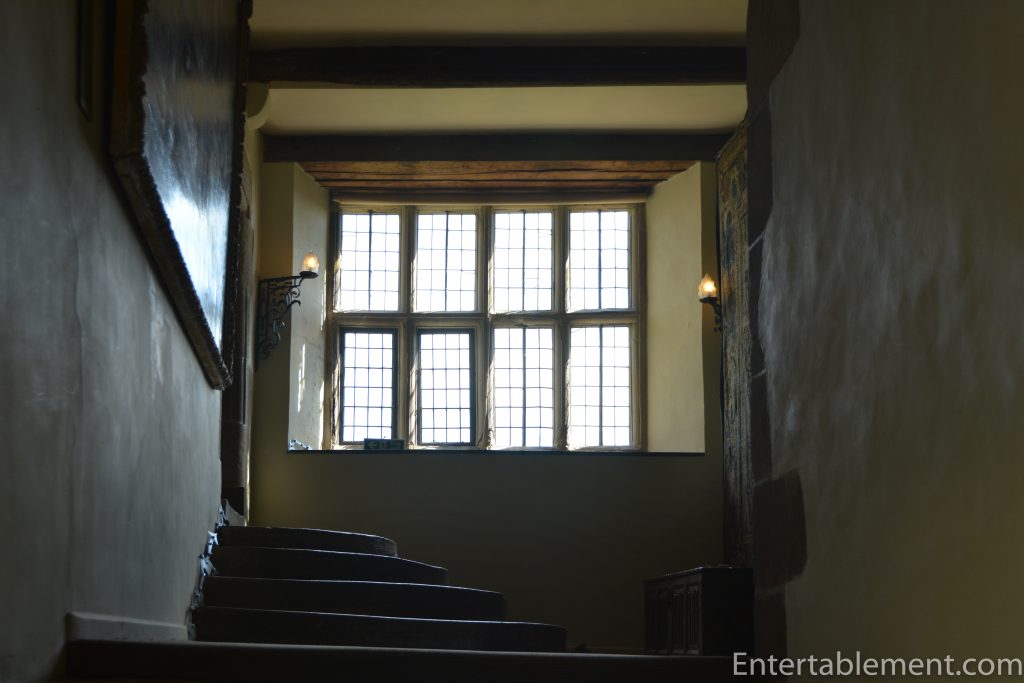
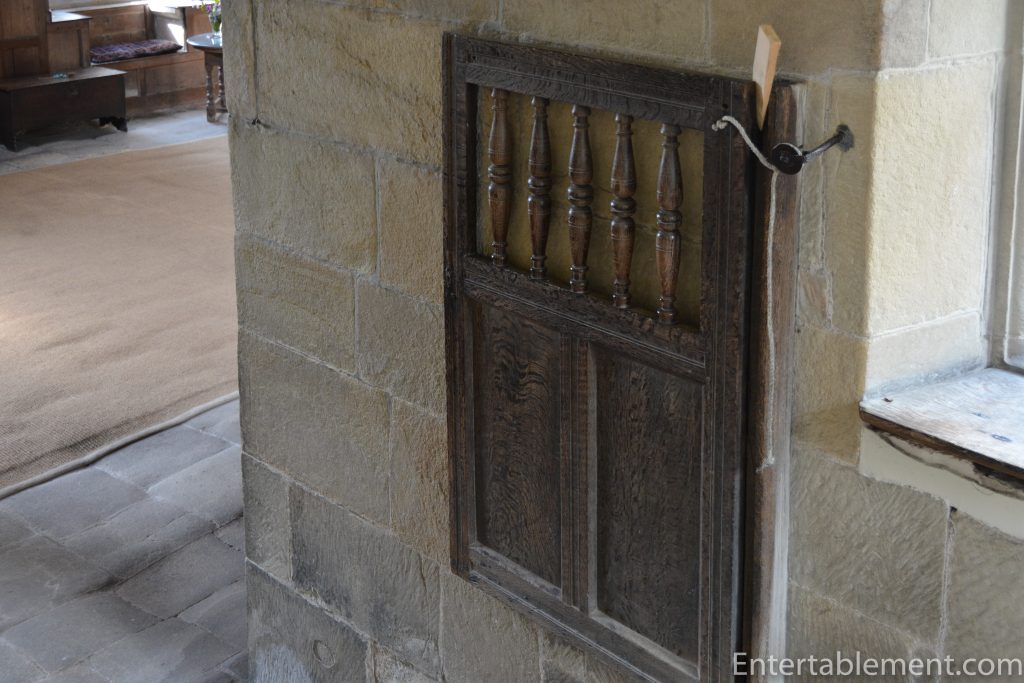


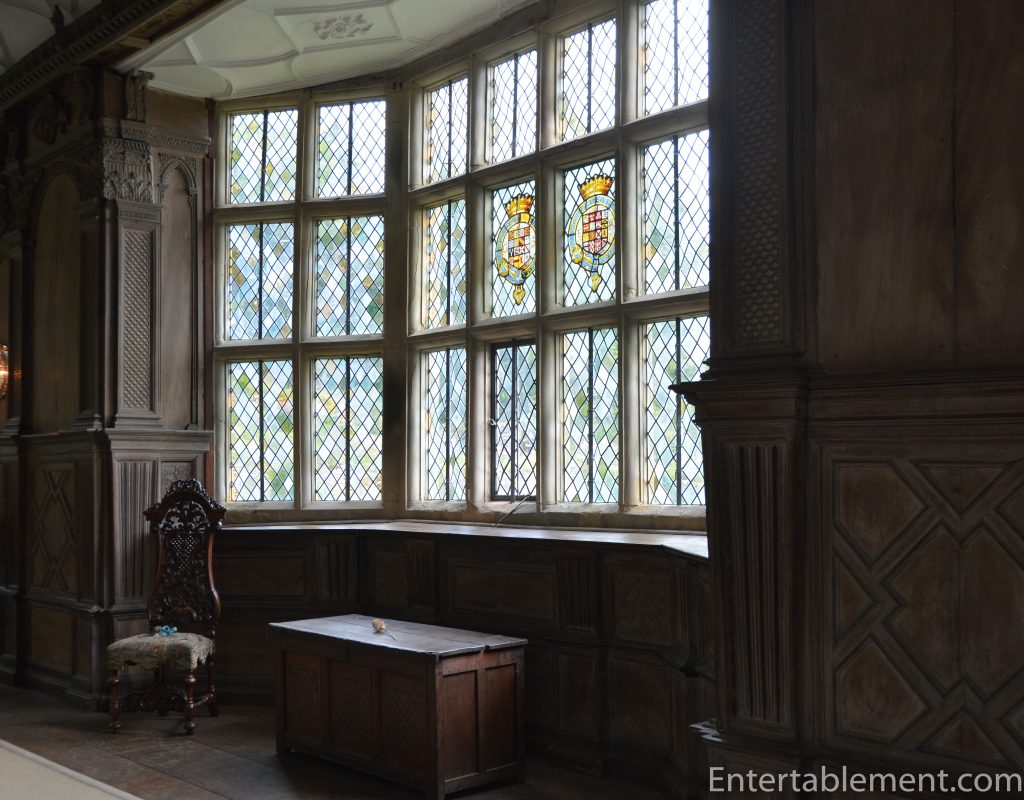
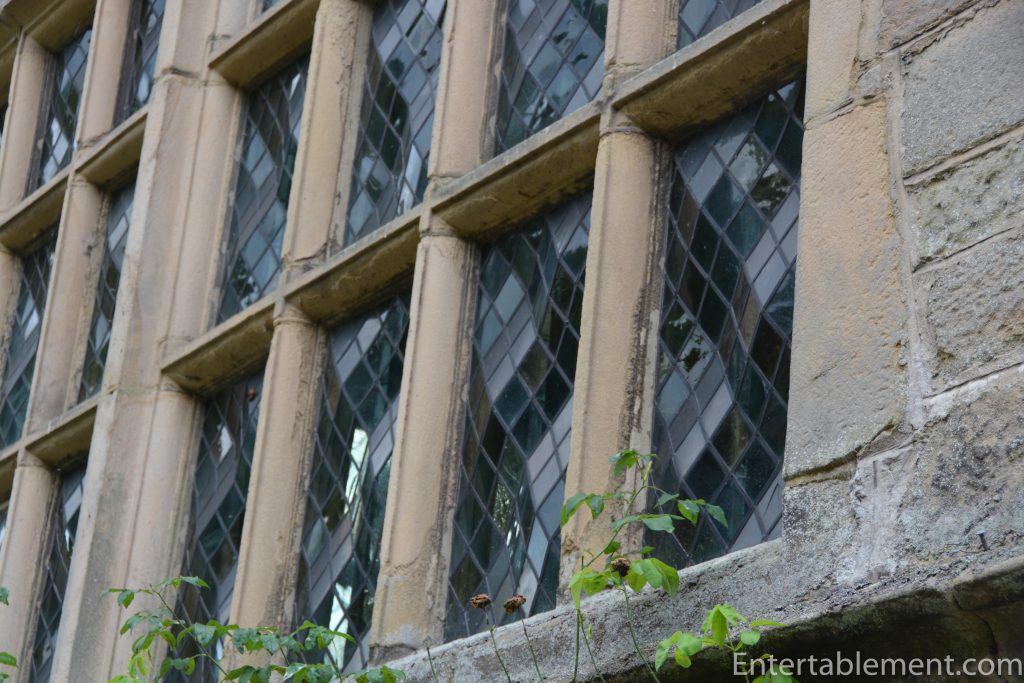



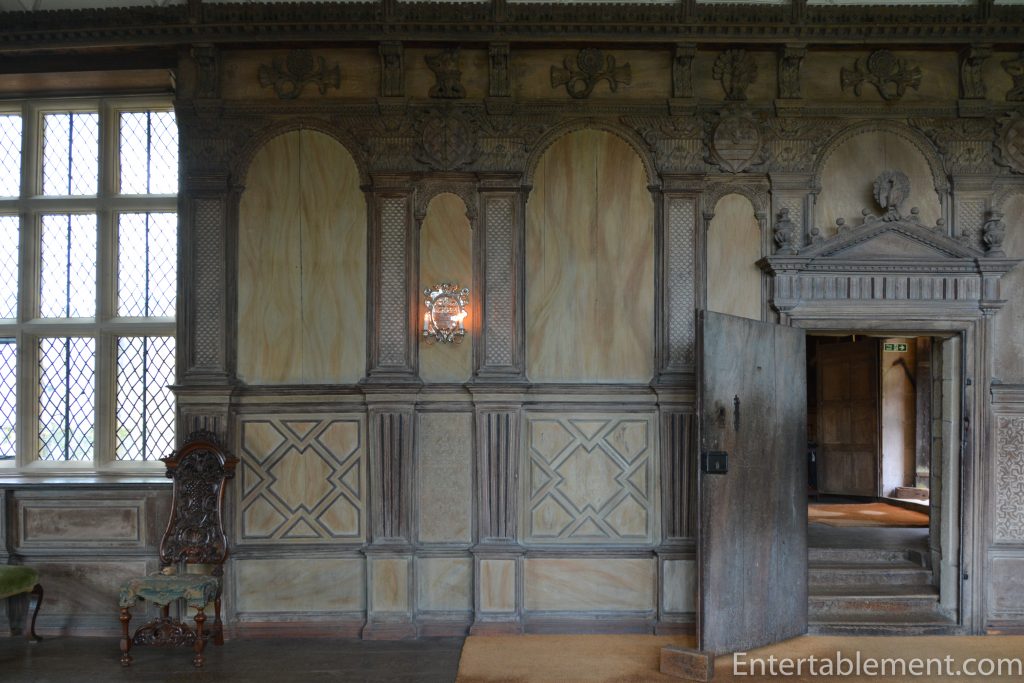


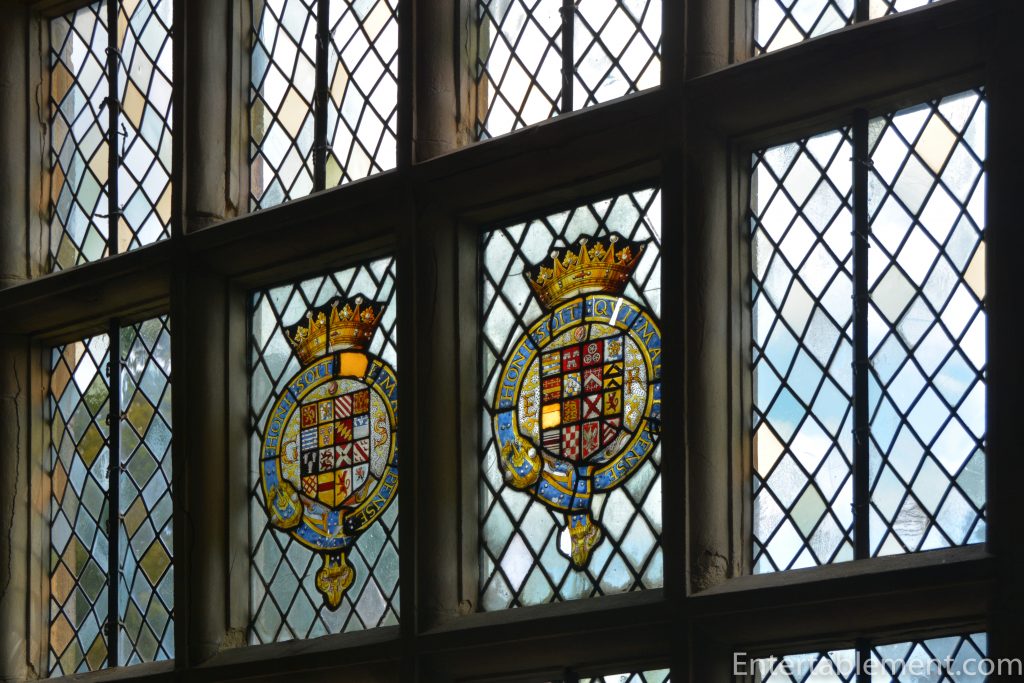



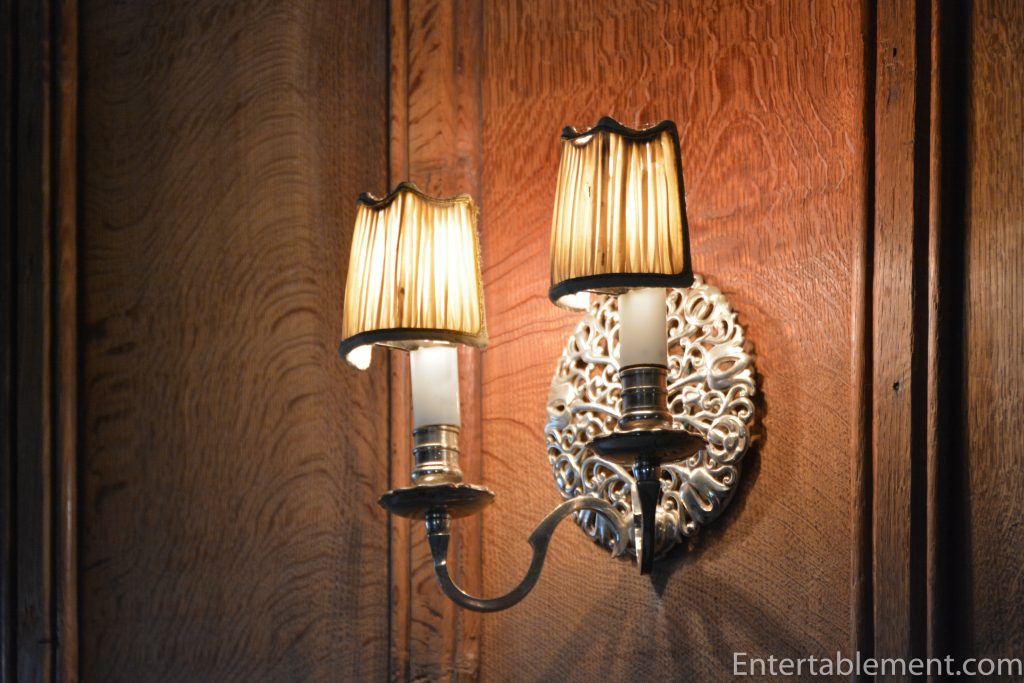
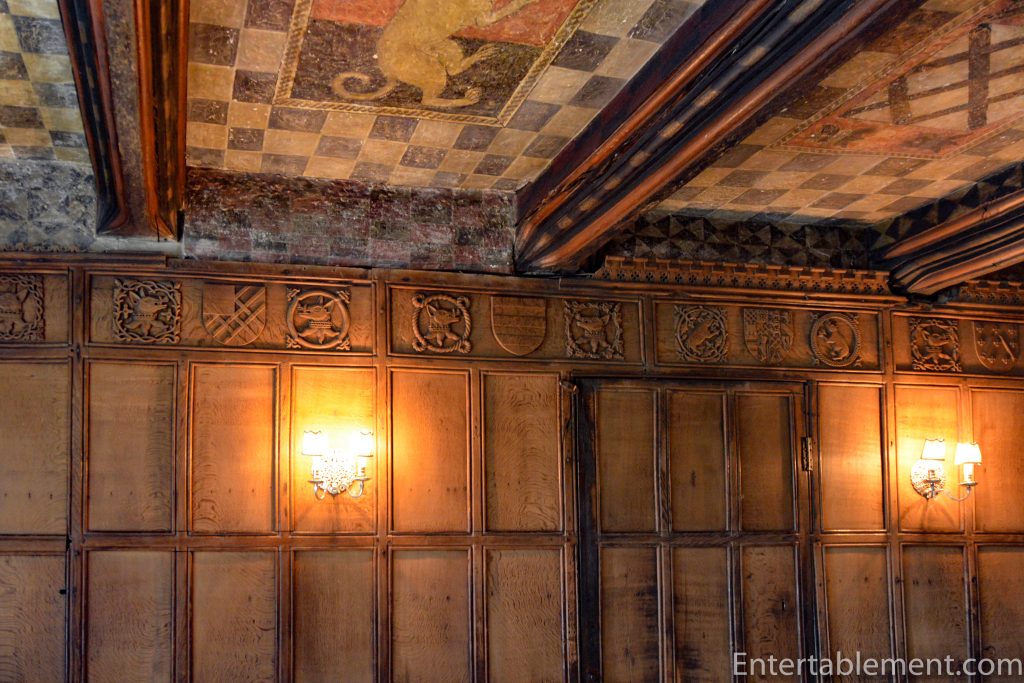

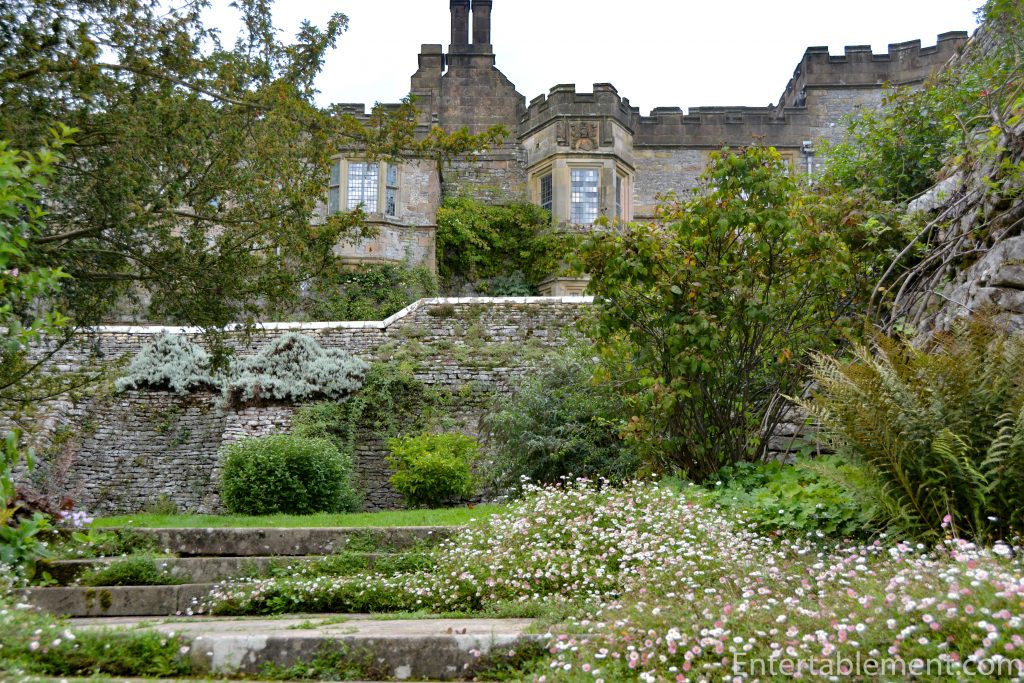
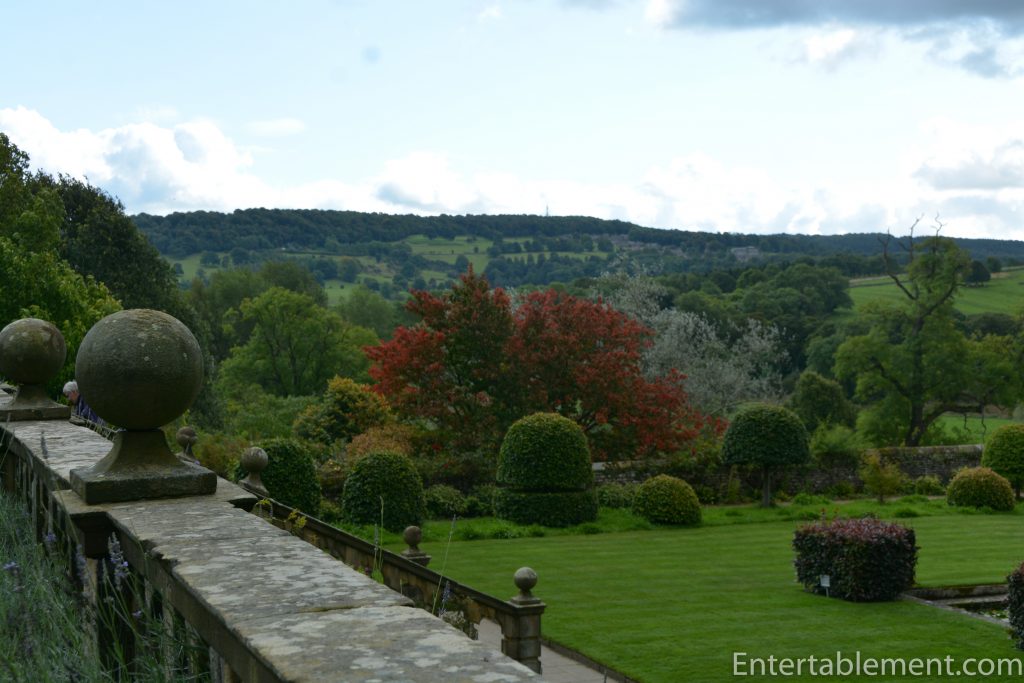



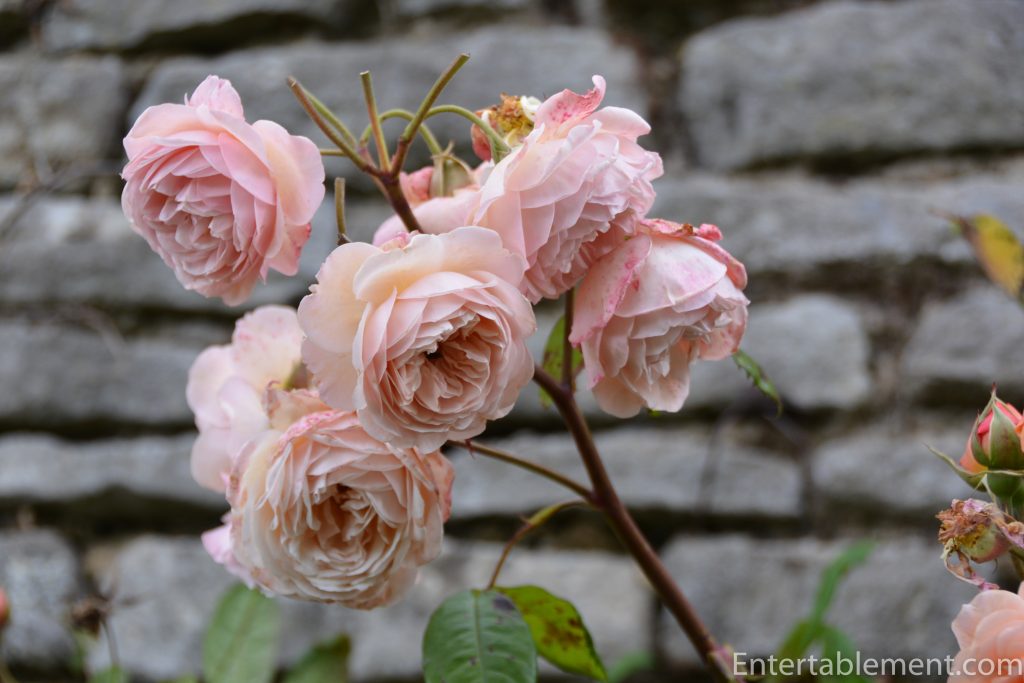


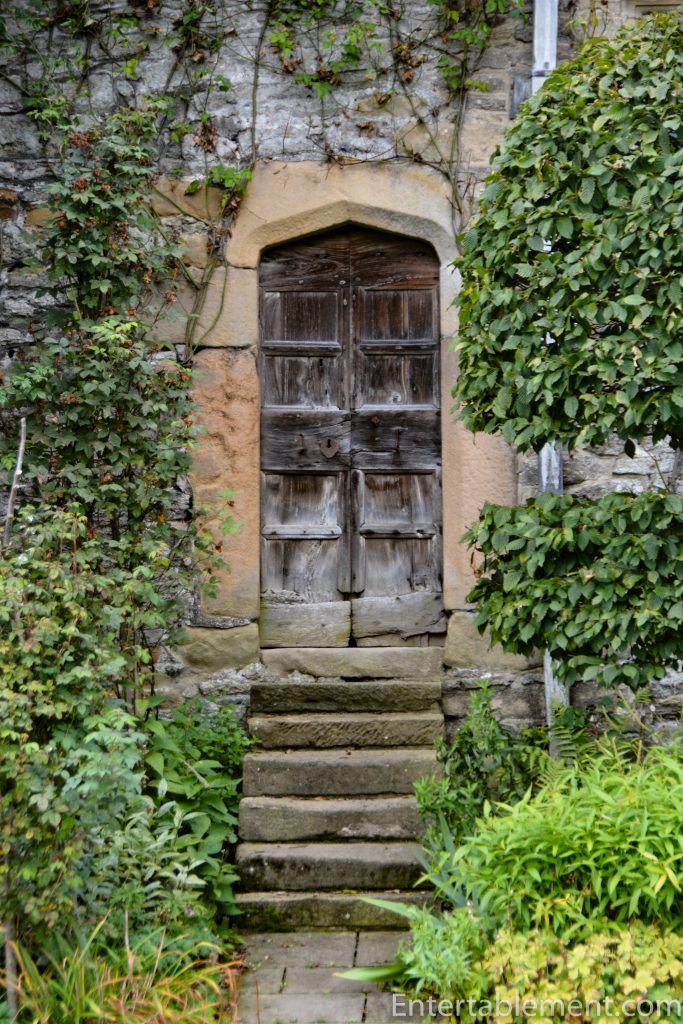
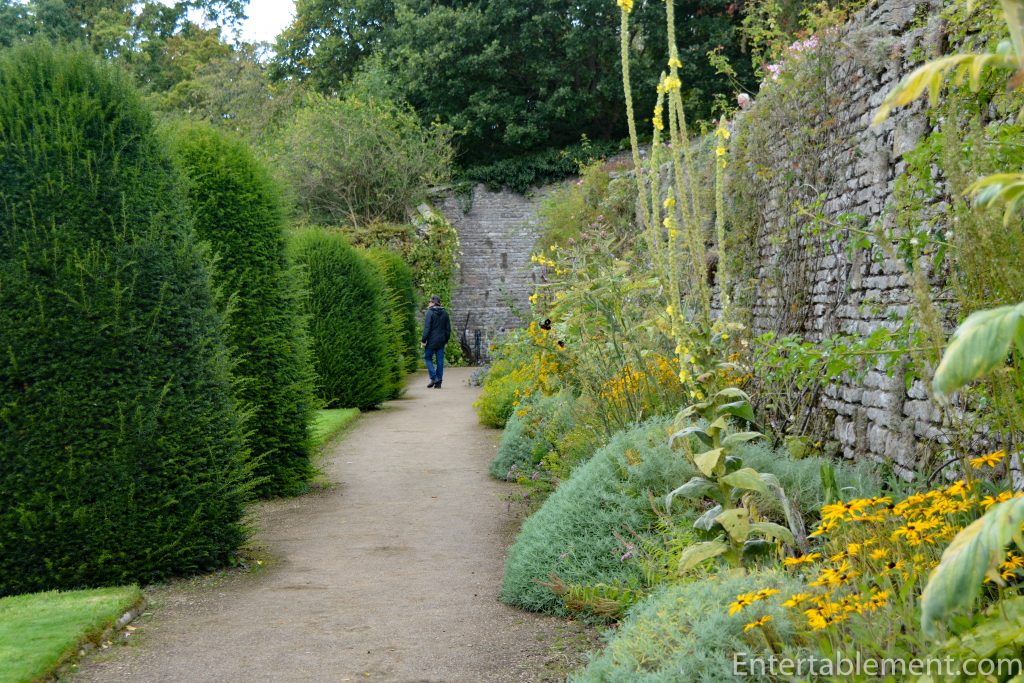





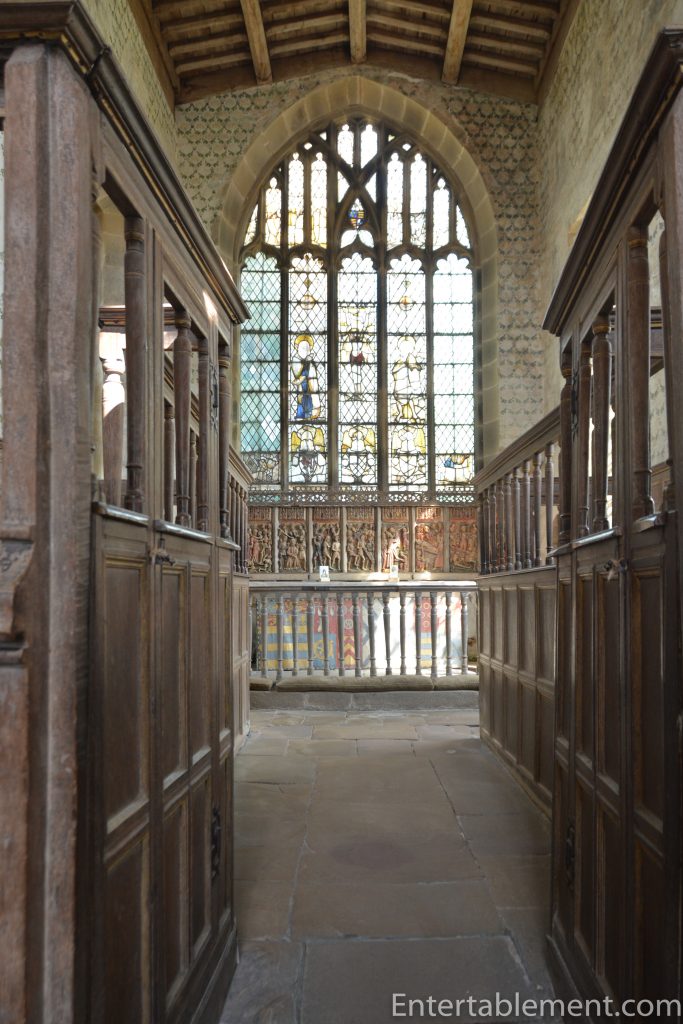


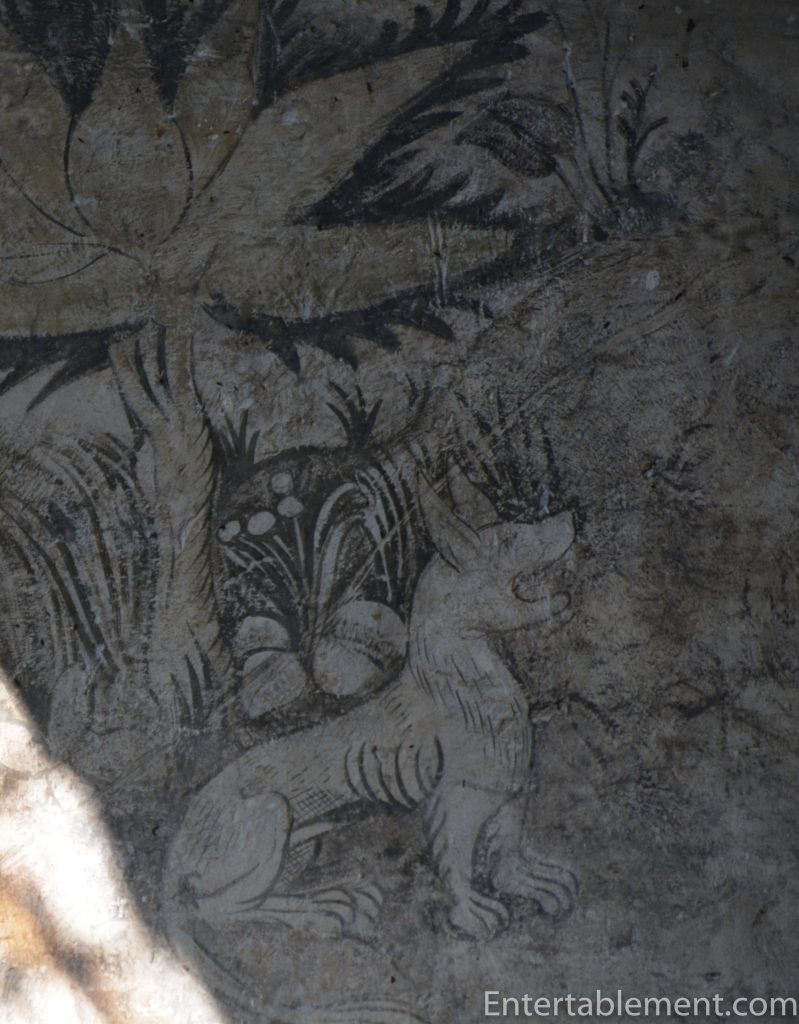

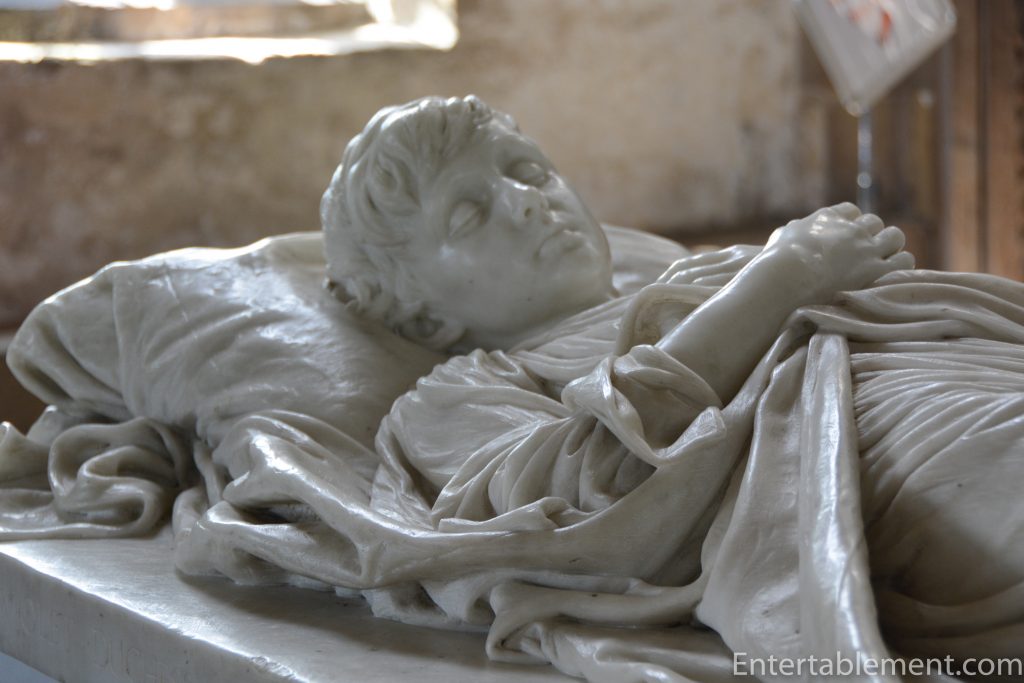
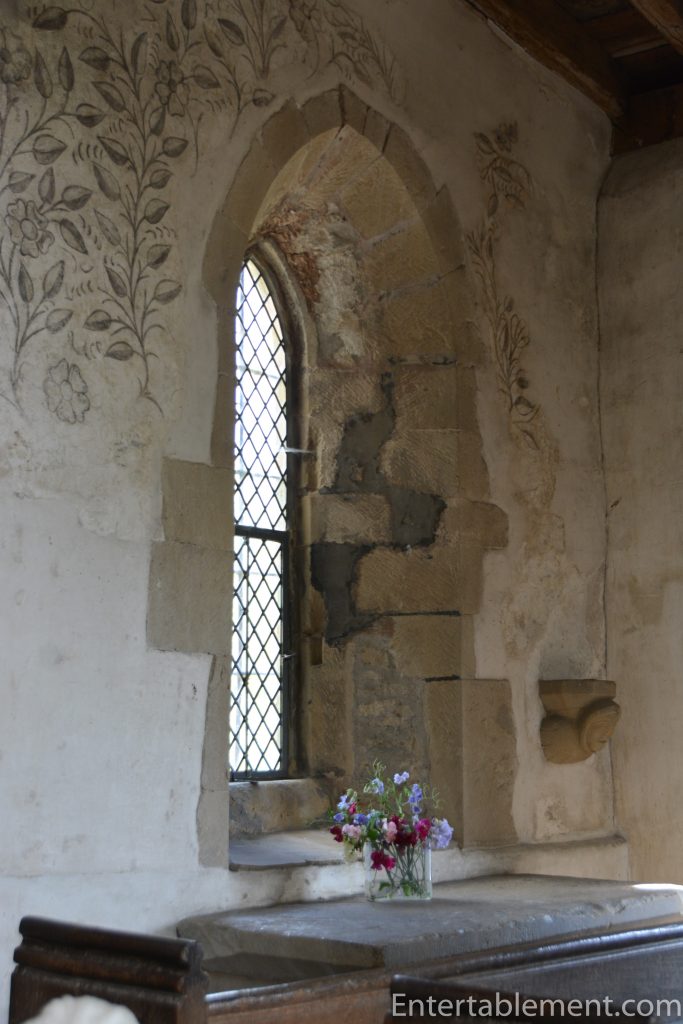
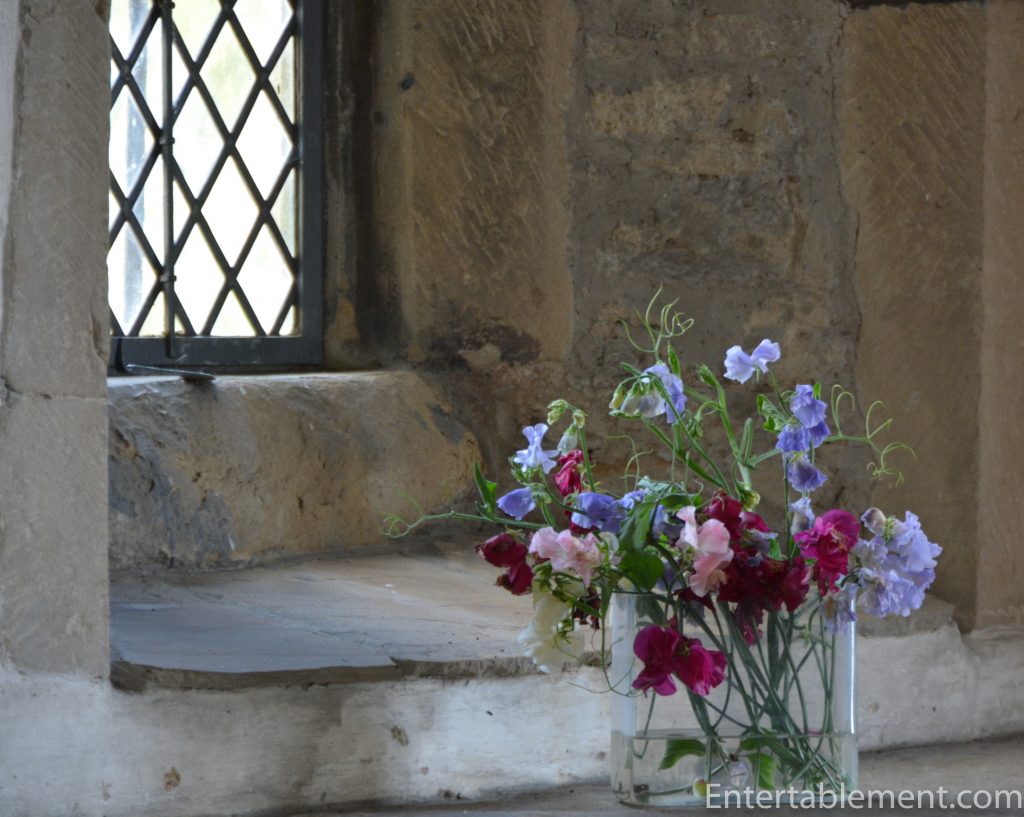
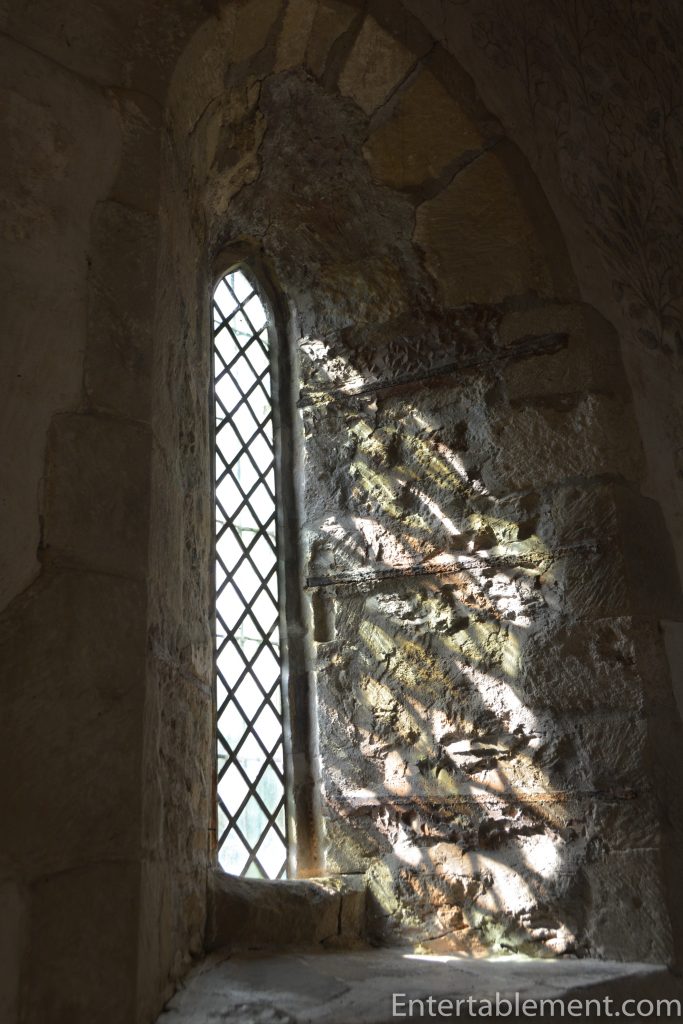
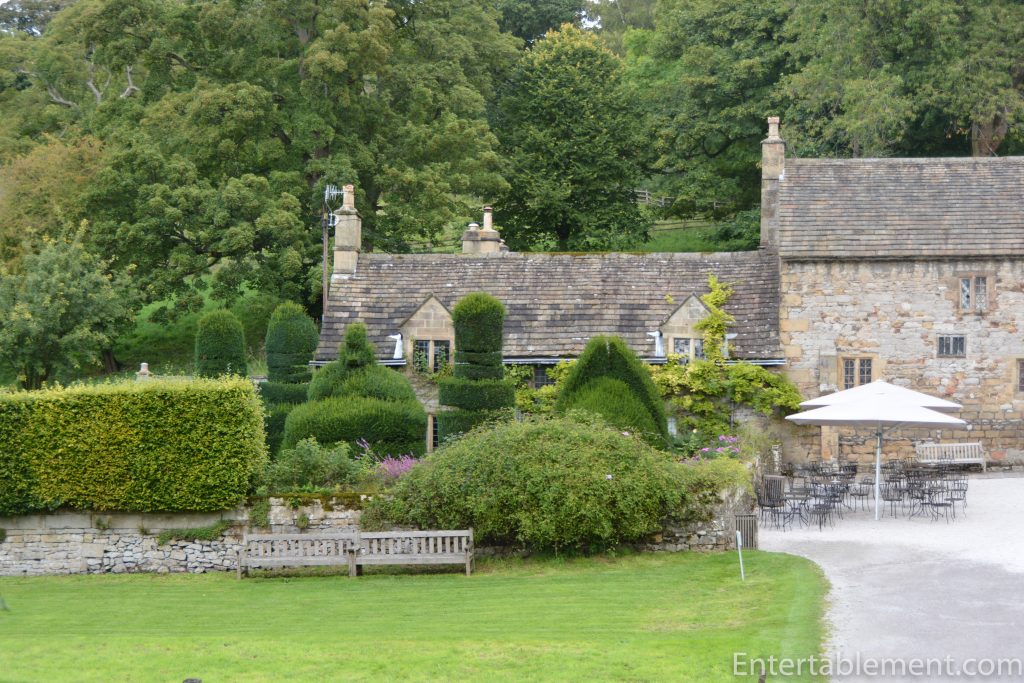




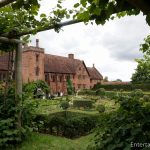


What a magnificent Manor house. Made me homesick when I saw my oak panelled walls and leaded lights. Mine buckled at different times during the four seasons. The gardens are exquisite. Not sure if they’re a creation of Capability Brown. A lovely visit on a Sunday afternoon. Thanks.
It really was beautiful, Maura. It makes me appreciate what the English must love about oak panelling – so different than the dreadful stuff we get here. Your place must have been lovely with the panelling and the leaded windows! As to the garden, the website says “Roses and Clematis on the walls surround new planting schemes by renowned garden designer, Arne Maynard. Since 2012, an Elizabethan knot garden has been developed on the Bowling Green Terrace; defined by Germander (Teucrium), Lavender and Rosemary, it displays plants popular 400 years ago. Borders bloom with medicinal and dye plants, and fragrant lavender, attracting bees and butterflies.”, so it looks like the gardens are recreations. Glad you enjoyed the post!
Helen, so much to admire here…the Tudors certainly loved their creature comforts, and the manors they built, at least those unmolested by later “improvements,” could be comfortable even now. The centuries of neglect probably saved Haddon.
Love the knot garden. “There’s rosemary, that’s for remembrance; pray, love, remember” (Hamlet, Act IV, sc. V). Also the obviously David Austin roses (although some of mine had weak necks, a cardinal sin in roses, IMHO). And lavender, approved as an anti-anxiety medicine in Germany even now!
Although nieders are a dime a dozen in Germany, only a handful exist in England. I think that’s due to the onion-like growth of the language: layers of linguistic invasions gave us Celtic, Norse, Old English, and French words to better describe specific geographic features than just nieder. Stow-on-the-Wold = religious place on a hill.
Here’s a fascinating wiki on toponymy, and the Univ of Nottingham has a fun website that allows you to explore a map of names near any destination:
https://en.wikipedia.org/wiki/Toponymy_of_England
http://kepn.nottingham.ac.uk
Also see my favorite book and series on the subject, The Story of English:
https://www.youtube.com/watch?v=FNZVSbQcpCI
Thanks for the beautiful tour!
Thanks so much for all of those resources, Beatrice. Language is utterly fascinating and has a beauty of its own, as deep and varied as visual beauty. Your craftsmanship of words and their layers of meaning is inspiring.
Excellent write-up, Helen – love the great hall and the chapel. Haddon Hall is on the list, but I’ve never been and it looks fabulous. There’s a wonderful quality to your photography, too. I keep the Oxford Dictionary of Place Names close by – you never know when you’re gonna need it! And thank you very much indeed for mentioning A Bit about Britain! All the best, Mike.
You’re very kind, Mike. I’m an enthusiastic amateur photographer, however, I find that taking pictures enhances the visit as it sharpens my focus. Many other people have commented that they see the world differently when they have a camera in hand, and that’s my experience, also.
What a beautiful manor house and such lovely photos. Very nice. The windows were very interesting with their buckling. I have not heard of that and assume that it an effect of age and weather and not intentional. So intriguing. Thanks for the tour.
I’d never noticed that aspect of the windows before, either, Lorri. It was surprisingly pronounced, though. I suspect age and weather-related as you say.